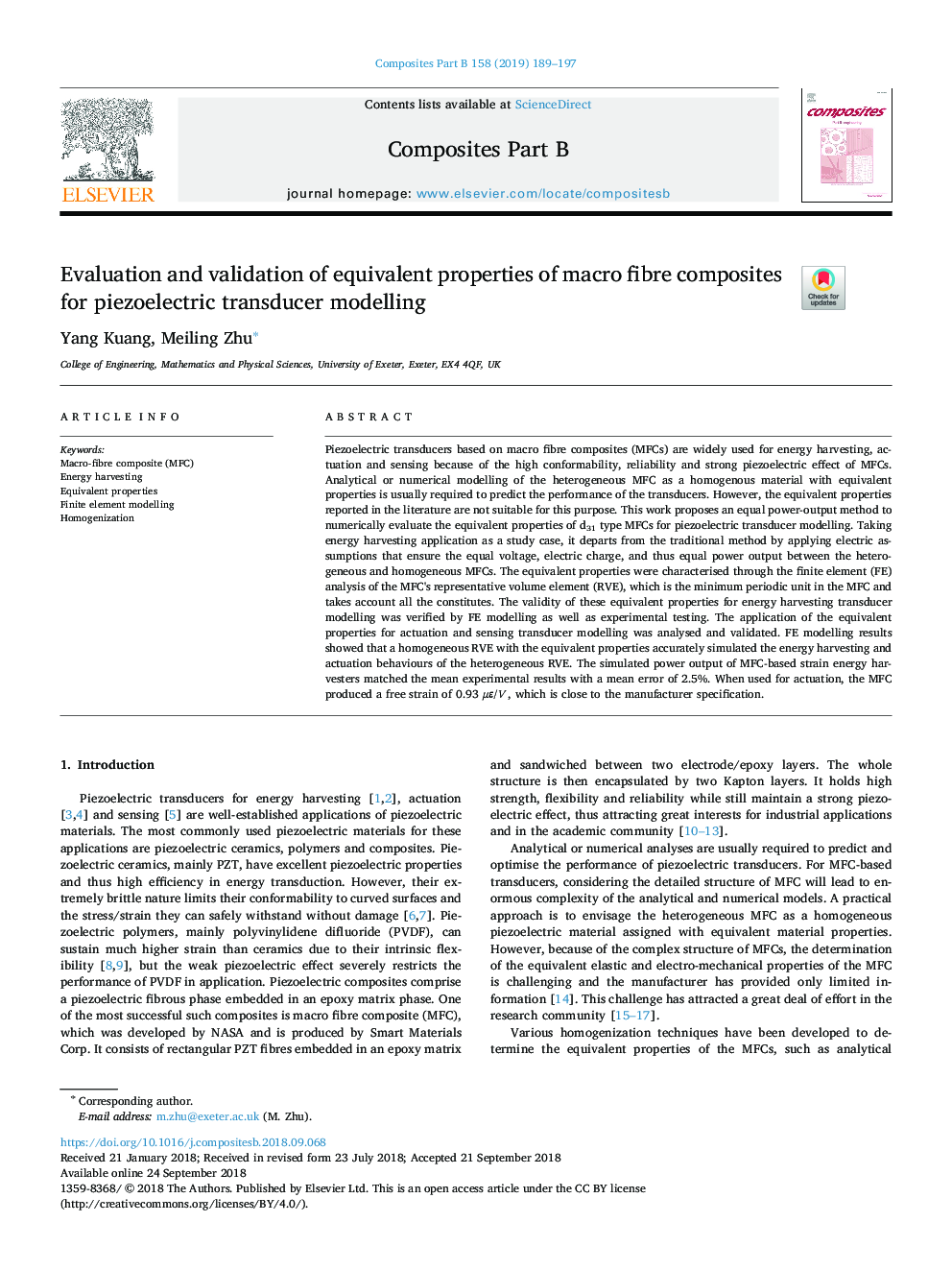| Article ID | Journal | Published Year | Pages | File Type |
|---|---|---|---|---|
| 11020694 | Composites Part B: Engineering | 2019 | 9 Pages |
Abstract
Piezoelectric transducers based on macro fibre composites (MFCs) are widely used for energy harvesting, actuation and sensing because of the high conformability, reliability and strong piezoelectric effect of MFCs. Analytical or numerical modelling of the heterogeneous MFC as a homogenous material with equivalent properties is usually required to predict the performance of the transducers. However, the equivalent properties reported in the literature are not suitable for this purpose. This work proposes an equal power-output method to numerically evaluate the equivalent properties of d31 type MFCs for piezoelectric transducer modelling. Taking energy harvesting application as a study case, it departs from the traditional method by applying electric assumptions that ensure the equal voltage, electric charge, and thus equal power output between the heterogeneous and homogeneous MFCs. The equivalent properties were characterised through the finite element (FE) analysis of the MFC's representative volume element (RVE), which is the minimum periodic unit in the MFC and takes account all the constitutes. The validity of these equivalent properties for energy harvesting transducer modelling was verified by FE modelling as well as experimental testing. The application of the equivalent properties for actuation and sensing transducer modelling was analysed and validated. FE modelling results showed that a homogeneous RVE with the equivalent properties accurately simulated the energy harvesting and actuation behaviours of the heterogeneous RVE. The simulated power output of MFC-based strain energy harvesters matched the mean experimental results with a mean error of 2.5%. When used for actuation, the MFC produced a free strain of 0.93 με/V, which is close to the manufacturer specification.
Related Topics
Physical Sciences and Engineering
Engineering
Engineering (General)
Authors
Yang Kuang, Meiling Zhu,
